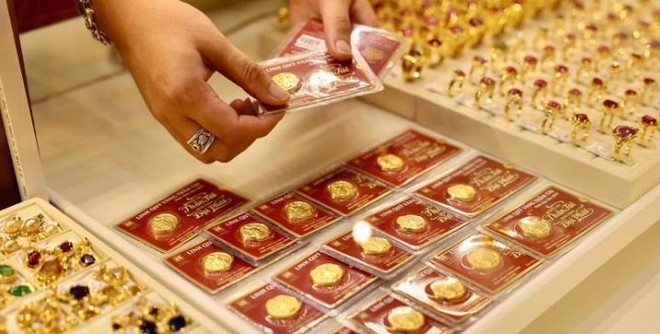SBV Deputy Governor Pham Tien Dung presided over the event, which brought together market experts and industry stakeholders to share information, experience, and policy recommendations regarding the formation of the trading floor. Dung said this is an important step to develop a legal framework and an operating mechanism for ensuring the pilot phase is carried out cautiously, safely, transparently, and effectively, contributing to the stabilization of the gold market and the macro-economy as a whole.
    |
 |
|
Vietnam is considering the establishment of a gold exchange to ensure market stability. |
Dung noted that the gold market has undergone significant transformation over years, with the central bank’s issuance of various decrees to manage gold trading activities since 2012, contributing to macroeconomic stability.
The SBV’s latest circular, promulgated on October 9, provides an important legal foundation for gold import, production, and domestic trading.
The Deputy Governor described the proposed trading floor as a coordinated policy step to complete market infrastructure and regulations as directed by the Party General Secretary and the Prime Minister, aiming to unlock gold reserves held by Vietnamese households, enhance transaction transparency, and strengthen the State’s management of the market.
Additionally, the gold exchange will provide transparent data for analysis, forecast, and policy making. When integrated and processed in a timely manner, the data will serve as a valuable supplementary source of information for monetary policy governance.
The central bank will report to the Government on the piloting of the gold exchange this month, Dung added.
Director of the SBV Foreign Exchange Management Department Dao Xuan Tuan noted that establishing a state-managed gold exchange aligns with the reality, as well as the current legal regulations and high-ranking leaders’ directives.
He outlined an implementation roadmap beginning with physical gold trading focused on distributing imported gold that meets quality standards. Subsequent phases will introduce gold account products and derivatives designed to transform gold holdings into productive capital for business and investment.
There are three models under consideration, a national gold exchange, gold transaction through the Mercantile Exchange of Vietnam, and building of a gold exchange within the international financial center.
The piloting of the gold exchange is expected to unfold in three phases, with timelines and details to be adjusted according to real-world developments. During the pilot stage, Vietnam’s gold exchange will not be linked to international platforms.
Source: VNA